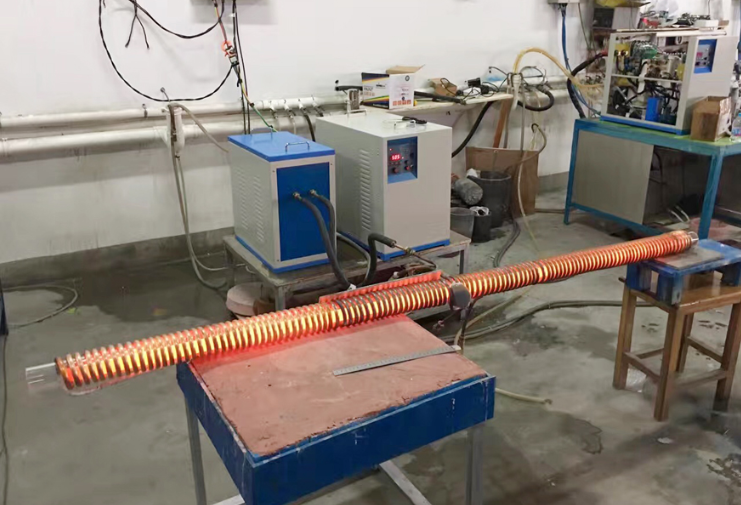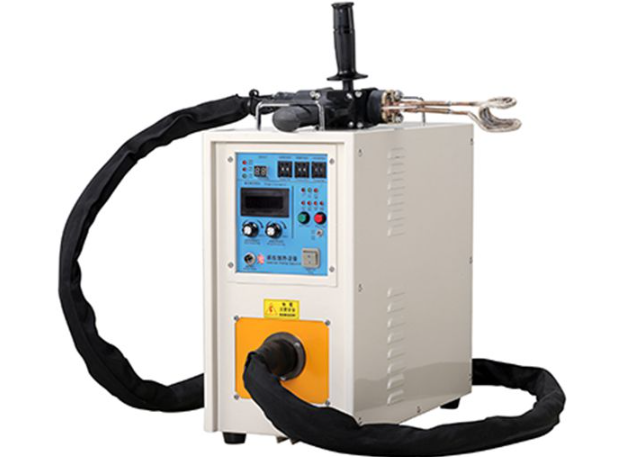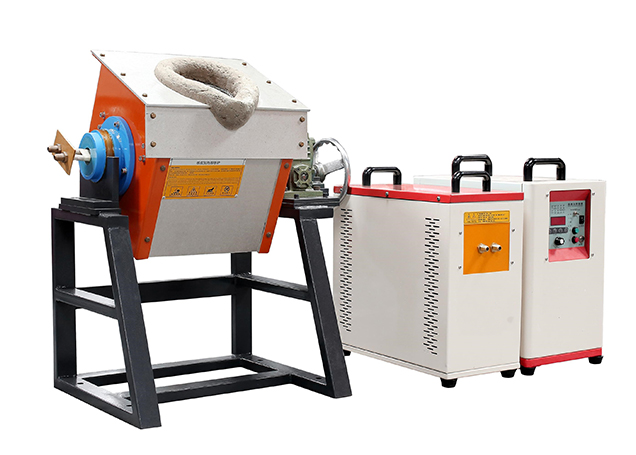An induction heating furnace for forging is primarily used for heating metal before thermoplastic processing (such as forging, extrusion, and rolling) and for the overall heat treatment of various profiles. Due to differing process requirements, induction furnaces (also known as diathermic furnaces) for forging come in various forms. Today, we will introduce these details to you.
Classification of Induction Heating Furnaces for Forging
1. Heating Methods:
Induction heating furnaces for forging can be classified into three types based on their heating methods: periodic, sequential, and continuous.
- Periodic: In this type, a single charge is placed in the furnace at a time. Once the heating process is completed and the hot charge is removed, a new cold charge is placed in the furnace.
- Sequential: Multiple charges are placed in the furnace simultaneously. As a new charge is fed into the inlet end, a hot charge that meets the temperature requirements is released from the outlet end, following a specific sequence and rhythm.
- Continuous: In this method, the charge moves through the furnace at a constant speed, ensuring it meets the required heating specifications by the time it exits.
2. Material of the Furnace Heats:
Induction heating furnaces can also be categorized based on the type of material they heat, namely non-magnetic materials and magnetic materials.
- Heating of Non-Magnetic Materials: This includes processes such as heating aluminum before rolling, copper before forging, and steel that has been pre-heated above the Curie point using a fuel furnace.
- Heating of Magnetic Materials: This is primarily for alloy materials based on iron, nickel, and cobalt. Common applications include heating steel at temperatures below the Curie point for processes like blue brittle cutting, surface anti-oxidation treatment, and low-temperature induction annealing of materials and machine parts.
The process from magnetic to non-magnetic heating involves raising the temperature of steel from room temperature to forging or quenching temperatures. This includes the low-temperature phase of high-power furnace segmented heating and the low-temperature heating phase of steel using dual-frequency heating below the Curie point with relatively low-frequency bands.
3. Shape of the Charge:
Induction heating furnaces can be classified based on the shape of the charge they process. The common shapes include cylindrical, rectangular cross-section, hollow, plate, strip, and profile.
4. Furnace Structure:
Based on the structure, induction furnaces for forging can be categorized into vertical and horizontal furnaces.
- Vertical Furnaces: These are predominantly used for heating large and heavy charges and are generally of the periodic type.
- Horizontal Furnaces: These are typically used for smaller or lighter charges and can be adapted for different heating processes.
5. Power Supply:
Induction furnaces for forging can be classified based on their power supply frequency into high frequency, medium frequency, and power frequency. Currently, most furnaces use medium frequency. With advancements in power supply technology, the range of frequency bands has increased. To enhance heating efficiency, dual-frequency and triple-frequency power supply heating methods are being promoted.
6. Heating Methods:
Based on heating methods, induction heating furnaces for forging can be divided into:
- Conventional Heating: Uses equal turn pitch coils.
- Rapid Heating: Uses variable turn pitch coils to achieve faster heating rates.

Main Advantages of Induction Heating Furnaces for Forging
1. Energy Efficiency: Induction heating furnaces for forging have a total efficiency of over 60% for steel. They are particularly effective for local heating, offering significant energy savings compared to other types of heating furnaces.
2. High-Quality Products: Induction heating produces high-quality and uniform products due to its rapid heating, which results in fine grain structures and minimal oxidation and decarburization. Additionally, the ease of mechanization and automation ensures consistent product performance and excellent repeatability.
3. Material Efficiency: The precise heating minimizes the amount of material reserved for processing, resulting in significant raw material savings. Additionally, the excellent heating performance helps extend the service life of molds.
4. Compact and Automated: The equipment is highly mechanized and automated, compact in size, and occupies less space, making it easy to integrate into assembly lines and automated production lines.
5. Environmentally Friendly: Induction heating is a clean energy source, providing good working conditions with minimal high temperatures and low environmental pollution.
6. Ease of Operation: The system is quick to start and stop, and it is easy to use and maintain, enhancing overall operational efficiency.
The Principle of Selecting an Induction Heating Furnace for Forging
When choosing an induction heating furnace for forging, the primary considerations should be productivity and energy efficiency. This mainly depends on the power of the variable frequency power supply, the frequency of the power supply, and the rationality of the inductor design. The appropriateness of the power frequency is directly related to the electrical efficiency of the heating furnace and the quality of the processing technology. Selecting the correct power frequency involves balancing two factors: ensuring electrical efficiency and enhancing cross-sectional temperature uniformity.
Process Requirements: These include heating temperature and temperature distribution, which depend on the matching of the inductor design impedance with the power supply, as well as the level of mechanization and automation.
Technical and Economic Indicators: The induction heating furnace for forging should offer advanced technical and economic benefits, such as:
- Low energy consumption
- Material savings
- Low operating costs
- Good working conditions
- High reliability
- Ease of use and maintenance
- Safe and reliable operation
The correct selection and purchase of a high-quality induction heating furnace for forging are crucial for safe and efficient production. Therefore, when purchasing an induction heating furnace for forging, it is advisable to consult with a professional manufacturer. We are happy to assist you in making the right choice.








